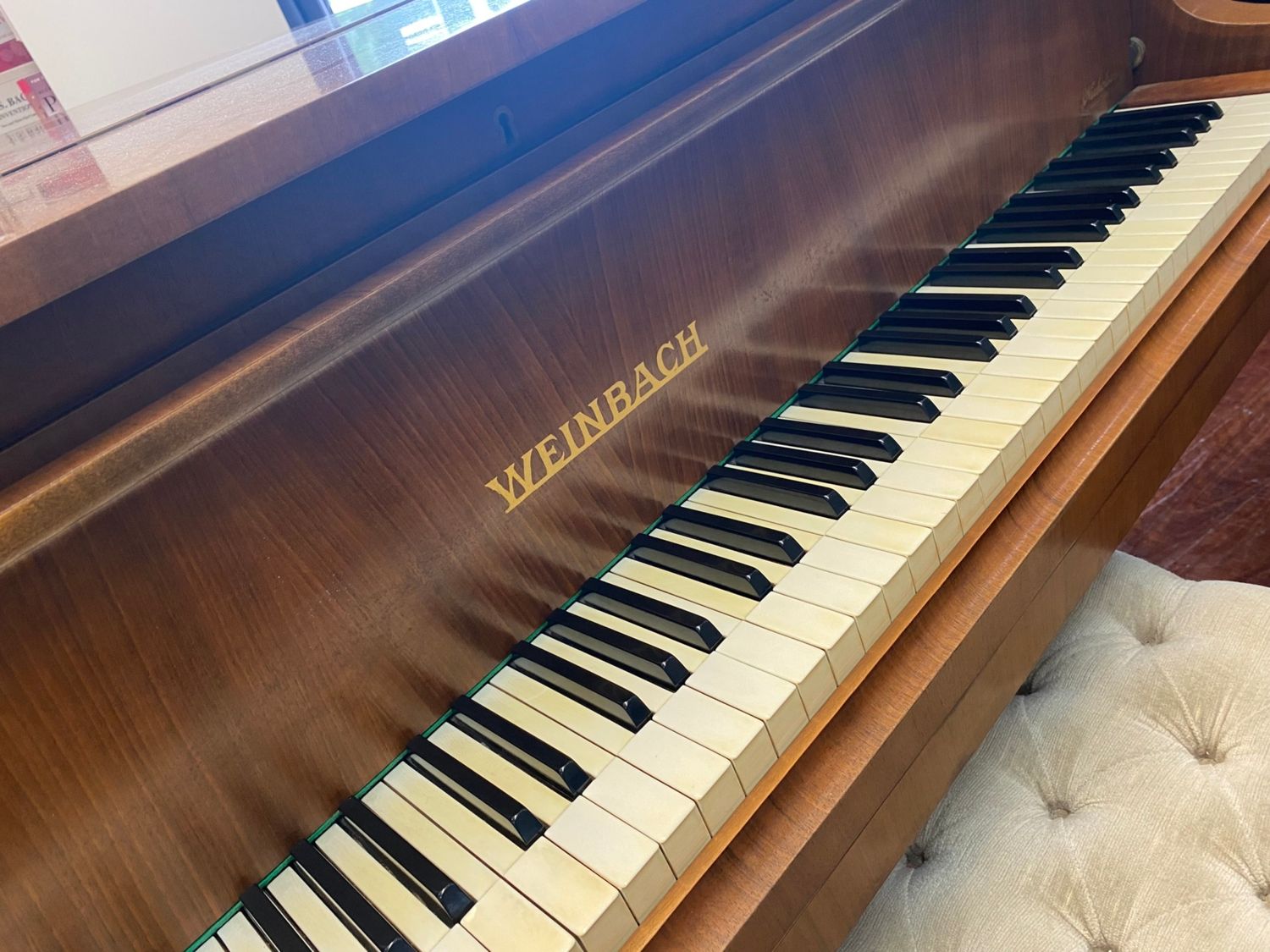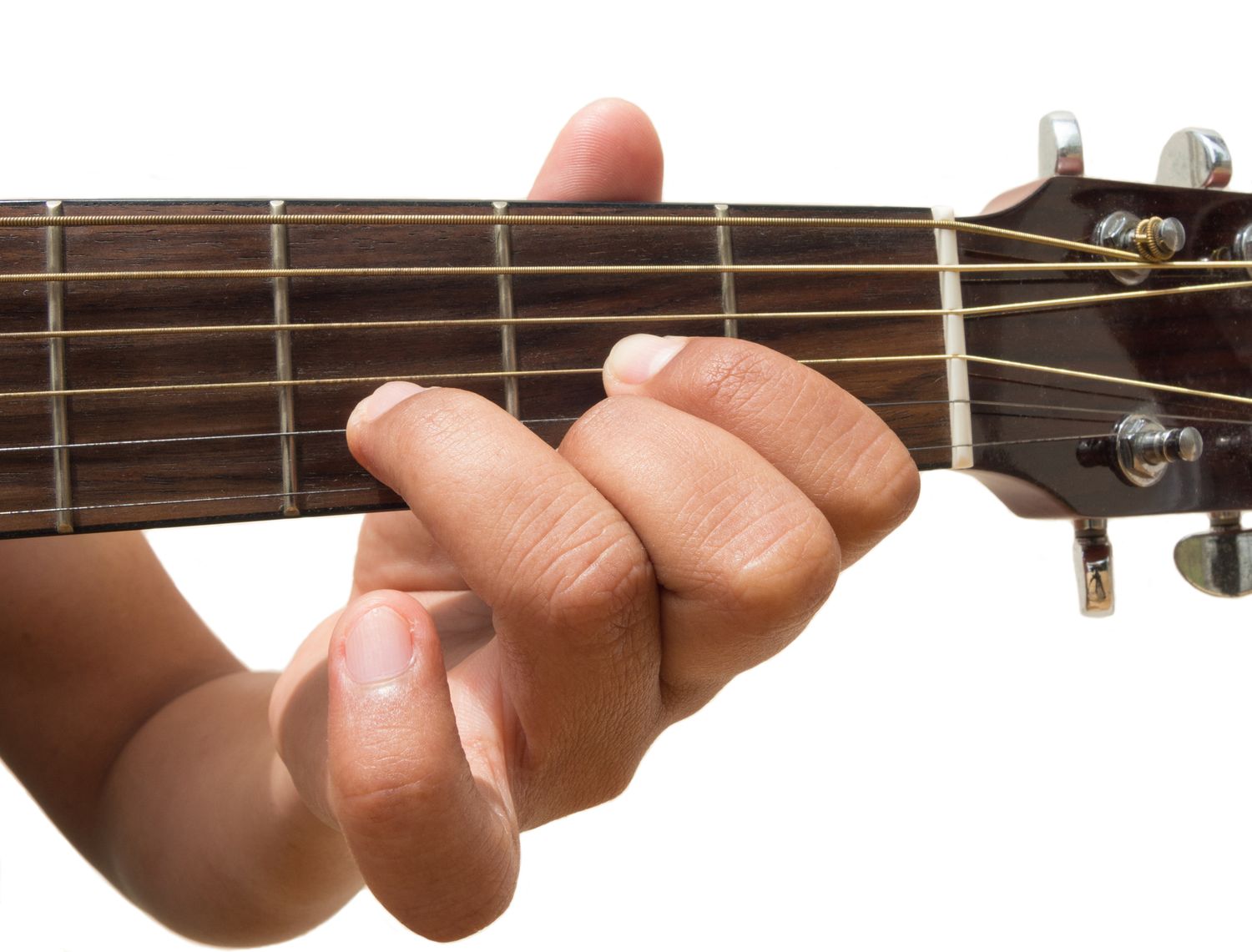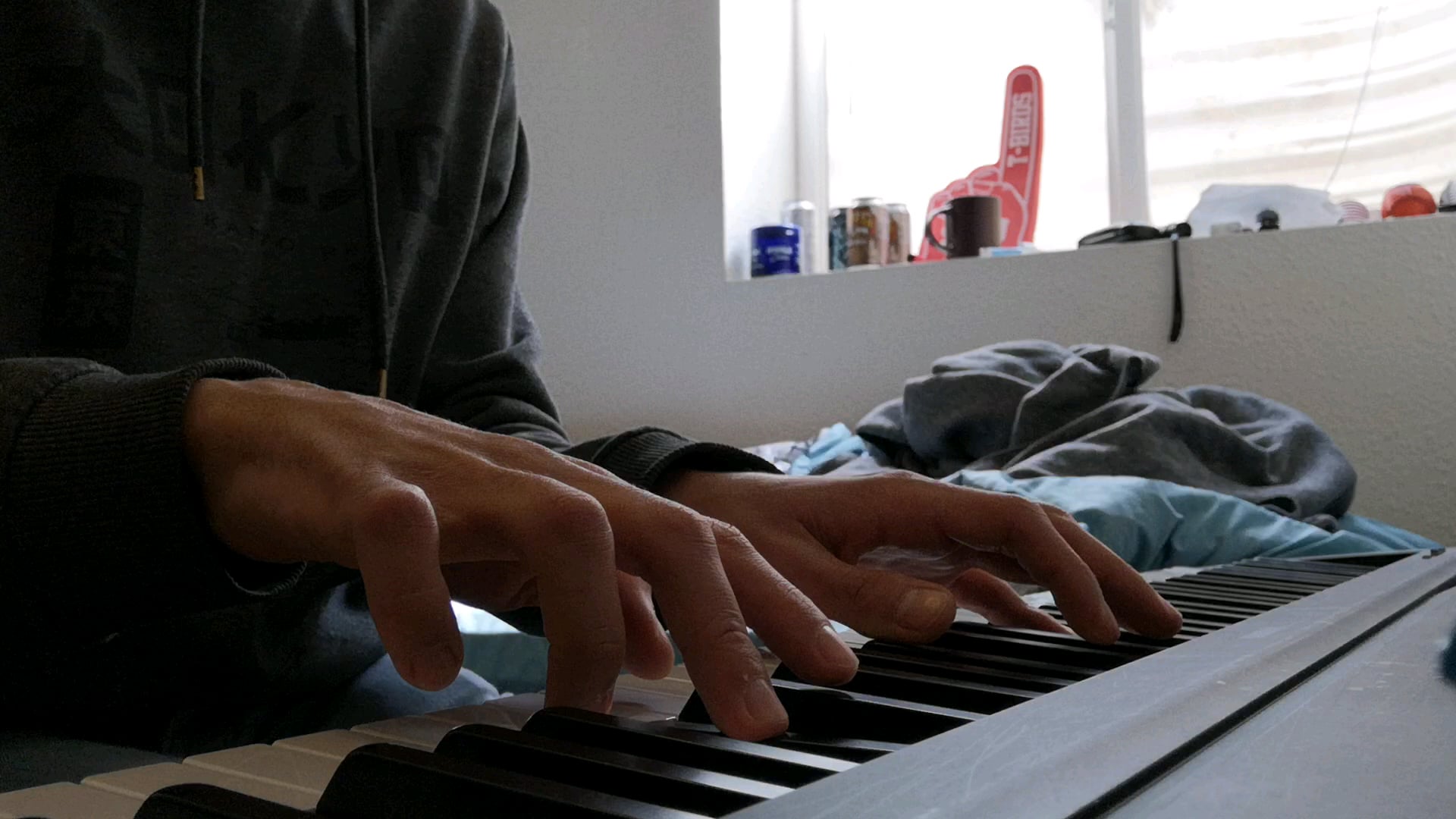Home>Instruments>Piano>How To Play D Minor On Piano


Piano
How To Play D Minor On Piano
Published: February 11, 2024
Learn how to play the D minor chord on the piano with our step-by-step guide. Master the basics of piano playing and start creating beautiful music today.
(Many of the links in this article redirect to a specific reviewed product. Your purchase of these products through affiliate links helps to generate commission for AudioLover.com, at no extra cost. Learn more)
Table of Contents
Introduction
Learning to play the piano is a rewarding journey that opens up a world of musical expression and creativity. One of the essential aspects of mastering the piano is understanding and practicing different scales and chords. In this article, we will delve into the captivating realm of the D minor scale on the piano. Whether you are a beginner eager to explore the fundamentals of piano playing or an intermediate player looking to expand your repertoire, understanding the D minor scale will enrich your musical prowess.
The D minor scale possesses a melancholic and evocative quality, making it a favorite among composers and musicians seeking to convey profound emotions through their music. By comprehensively exploring the D minor scale, chord, and arpeggio, you will gain valuable insights into the harmonic and melodic aspects of piano playing. Moreover, we will discuss the finger positions and practice tips essential for mastering the D minor scale, empowering you to infuse your piano performances with depth and emotion.
Throughout this article, we will unravel the nuances of playing the D minor scale on the piano, providing you with a comprehensive guide to enhance your musical journey. Whether you aspire to evoke poignant melodies or simply expand your musical proficiency, the exploration of the D minor scale will undoubtedly elevate your piano playing skills. So, let's embark on this harmonious adventure and uncover the captivating world of D minor on the piano.
Understanding the D Minor Scale
The D minor scale is a fundamental component of piano playing, characterized by its poignant and emotive tonality. Comprising the notes D, E, F, G, A, B♭, and C, the D minor scale follows a specific pattern of whole and half steps, resulting in a distinctive sound that resonates with depth and introspection. The scale’s formula consists of a whole step between D and E, a half step between E and F, a whole step between F and G, and so forth, culminating in a whole step between C and D, completing the octave.
Understanding the structure and intervals of the D minor scale is pivotal for pianists aiming to imbue their performances with expressive melodies and harmonic richness. The scale’s inherent melancholic quality lends itself to a myriad of musical genres, from classical compositions to contemporary pieces, making it a versatile and indispensable tool in a pianist’s repertoire.
Moreover, comprehending the relationship between the D minor scale and its relative major scale, F major, provides valuable insight into the harmonic context and tonal possibilities within the D minor key. By recognizing the shared notes and chords between these scales, pianists can navigate the harmonic landscape with fluency and creativity, unlocking a world of musical potential.
Whether you are exploring the D minor scale for its emotive resonance or seeking to broaden your understanding of musical theory, delving into the intricacies of this scale will undoubtedly enrich your piano playing journey. As we continue our exploration, we will unravel the captivating facets of the D minor chord and arpeggio, further expanding our harmonic and melodic horizons on the piano.
D Minor Chord
The D minor chord is a foundational element in piano playing, imbuing compositions with a sense of melancholy and introspection. Comprised of the notes D, F, and A, the D minor chord emanates a hauntingly beautiful quality that resonates with both musicians and listeners alike. Understanding the construction and voicing of the D minor chord is essential for pianists seeking to convey emotive depth and harmonic richness in their performances.
The D minor chord follows a specific formula of a root note (D), a minor third (F), and a perfect fifth (A), resulting in a harmonious blend of tones that encapsulate the essence of the D minor tonality. When played in its root position, the D minor chord evokes a sense of melancholic beauty, making it a poignant choice for compositions across various musical genres.
Exploring the inversions and voicings of the D minor chord allows pianists to infuse their playing with dynamic expression and versatility. By mastering different voicings and inversions, pianists can introduce captivating harmonic progressions and melodic transitions, adding depth and complexity to their musical interpretations.
Furthermore, understanding the harmonic context of the D minor chord within the broader framework of the D minor scale empowers pianists to create seamless transitions and compelling chord progressions, elevating their musical compositions and improvisations.
Whether you are a budding pianist eager to grasp the fundamentals of chord theory or an experienced player seeking to expand your harmonic vocabulary, the D minor chord serves as a cornerstone in the realm of piano playing, offering a wealth of expressive possibilities and emotional resonance.
D Minor Arpeggio
The D minor arpeggio is a captivating melodic sequence that showcases the harmonic richness and emotive depth of the D minor chord. Comprising the notes D, F, and A, the D minor arpeggio unfolds in a compelling cascade of tones, allowing pianists to infuse their performances with poignant expressiveness and virtuosic flair. Mastering the D minor arpeggio is a pivotal aspect of piano playing, enabling musicians to embellish compositions with captivating melodic flourishes and harmonic resonance.
When played in its fundamental form, the D minor arpeggio encompasses the root note (D), the minor third (F), and the perfect fifth (A), creating a harmonious progression that encapsulates the essence of the D minor tonality. The arpeggio’s seamless fusion of individual notes into a fluid, cascading sequence evokes a sense of melancholic beauty, making it a compelling choice for pianists seeking to convey emotive depth and melodic allure.
Exploring the various inversions and patterns of the D minor arpeggio empowers pianists to unleash their creativity and virtuosity, allowing for dynamic interpretations and expressive renditions. By mastering the arpeggio’s fluid transitions and melodic contours, pianists can embellish their performances with captivating embellishments and melodic variations, adding a layer of sophistication and allure to their musical expressions.
Moreover, integrating the D minor arpeggio within improvisational contexts and compositional endeavors enables pianists to weave intricate melodic tapestries and harmonic landscapes, enriching their musical narratives with evocative nuances and expressive depth.
Whether you are honing your technical proficiency or seeking to infuse your piano performances with emotive resonance and virtuosic flair, mastering the D minor arpeggio is a transformative endeavor that elevates your musical prowess and captivates the hearts of your audience with its enchanting melodic allure.
Playing D Minor Scale on Piano
Playing the D minor scale on the piano is a captivating endeavor that allows pianists to explore the evocative tonality and expressive depth inherent in this melodic sequence. To begin, position your right hand with your thumb (finger 1) on the D note, followed by your middle finger (finger 3) on the E note, and your pinky (finger 5) on the F note. As you ascend, continue with your thumb on the G note, index finger (finger 2) on the A note, middle finger (finger 3) on the B♭ note, and conclude with your pinky on the C note, completing the octave.
For the left hand, start with your pinky (finger 5) on the D note, followed by your ring finger (finger 4) on the C note, middle finger (finger 3) on the B♭ note, index finger (finger 2) on the A note, and continue descending with your thumb on the G note, middle finger (finger 3) on the F note, and index finger (finger 2) on the E note. Conclude the scale with your pinky on the D note, completing the octave in the lower register.
When playing the D minor scale, maintaining a fluid and even tempo is essential to evoke the scale’s emotive resonance and melodic allure. Focus on achieving a seamless transition between notes, allowing the scale to unfold with clarity and expressiveness. Pay attention to the articulation and dynamics, infusing the scale with nuanced phrasing and emotive subtleties to captivate the listener’s ear.
Moreover, practicing the D minor scale in various rhythmic patterns and articulations enhances your dexterity and technical agility, enabling you to navigate the scale with precision and finesse. Experiment with staccato, legato, and varied rhythmic accents to imbue the scale with diverse textures and expressive nuances, elevating your piano playing to new heights of artistry and musicality.
As you immerse yourself in the enchanting realm of the D minor scale on the piano, embrace the emotive resonance and harmonic richness it offers, allowing your performances to resonate with depth and allure, captivating audiences with the evocative melodies and expressive narratives woven through the captivating tapestry of the D minor scale.
D Minor Finger Positions
Mastering the finger positions for the D minor scale on the piano is integral to executing the scale with precision, fluidity, and expressiveness. Whether you are navigating the scale in its ascending or descending form, understanding the optimal finger placements empowers you to traverse the keyboard with agility and finesse, unlocking the melodic allure and harmonic richness of the D minor scale.
For the right hand, the D minor scale begins with the thumb (finger 1) on the D note, followed by the middle finger (finger 3) on the E note, and the pinky (finger 5) on the F note, establishing a solid foundation for ascending the scale. As you progress, the thumb navigates the G note, the index finger (finger 2) addresses the A note, and the middle finger (finger 3) gracefully reaches the B♭ note, culminating in the pinky (finger 5) gracefully articulating the C note, completing the octave with poise and precision.
When descending the D minor scale, the right hand’s pinky (finger 5) initiates the sequence on the C note, followed by the middle finger (finger 3) on the B♭ note, index finger (finger 2) on the A note, and the thumb (finger 1) gracefully addressing the G note. The middle finger (finger 3) then descends to the F note, followed by the index finger (finger 2) on the E note, and the thumb (finger 1) concluding the scale on the D note, maintaining a seamless and fluid transition.
For the left hand, the finger positions mirror the right hand’s sequence in reverse. As you ascend the scale, the pinky (finger 5) initiates the D note, followed by the ring finger (finger 4) on the C note, middle finger (finger 3) on the B♭ note, and index finger (finger 2) on the A note. The thumb (finger 1) then ascends to the G note, followed by the middle finger (finger 3) on the F note, and the index finger (finger 2) on the E note, culminating in the pinky (finger 5) gracefully articulating the D note, completing the octave in the higher register.
By internalizing and practicing the finger positions for the D minor scale, pianists can navigate the melodic contours and harmonic nuances with finesse and artistry, allowing the scale’s emotive resonance and expressive depth to captivate audiences and elevate their musical performances to new heights of virtuosity and allure.
Practice Tips
Mastering the D minor scale on the piano requires dedicated practice and a strategic approach to hone your technical proficiency and interpretive finesse. Here are some valuable practice tips to enhance your mastery of the D minor scale:
- Consistent Hand Separation: Begin by practicing the D minor scale with each hand separately to familiarize yourself with the finger positions, note transitions, and overall melodic contour. This approach allows you to focus on the nuances of each hand’s movements and facilitates a deeper understanding of the scale’s structure.
- Gradual Tempo Increase: Start practicing the D minor scale at a comfortable tempo, ensuring precision and clarity in each note. As you gain confidence, gradually increase the tempo while maintaining accuracy and fluidity. This gradual tempo acceleration enhances your dexterity and control, enabling you to navigate the scale with confidence and expressiveness.
- Dynamic Expression: Experiment with varying dynamics and articulations while practicing the D minor scale. Incorporate crescendos, diminuendos, staccato, and legato phrasing to imbue the scale with expressive depth and emotive resonance. This dynamic exploration enriches your interpretation and infuses the scale with captivating musicality.
- Rhythmic Variations: Integrate diverse rhythmic patterns into your practice routine, such as triplets, sixteenth notes, and syncopated rhythms. This rhythmic diversity enhances your rhythmic precision and fosters a nuanced understanding of the scale’s rhythmic intricacies, elevating your overall musicality.
- Hand Coordination Exercises: Engage in hand coordination exercises that involve playing the D minor scale in contrary motion, parallel motion, and other intervallic variations. These exercises enhance your hand independence and coordination, enabling you to navigate intricate passages with fluency and agility.
- Artistic Interpretation: Embrace the artistic dimension of the D minor scale by infusing your practice sessions with emotive interpretation and personal expression. Delve into the scale’s emotive resonance and explore its melodic potential, allowing your musical sensibilities to shape the nuances of your performance.
By integrating these practice tips into your daily routine, you will embark on a transformative journey toward mastering the D minor scale on the piano, cultivating technical prowess, interpretive artistry, and a profound connection to the expressive allure of this captivating melodic sequence.
Conclusion
Embarking on the exploration of the D minor scale on the piano unveils a world of emotive resonance, harmonic richness, and artistic expression. Through our comprehensive journey, we have delved into the fundamental elements of the D minor scale, including its structure, chord, arpeggio, and finger positions, providing pianists with a holistic understanding of this captivating melodic sequence.
The D minor scale’s poignant tonality and evocative allure make it a timeless cornerstone of musical expression, transcending genres and captivating audiences with its melancholic beauty. Whether you are navigating its seamless melodic contours, infusing compositions with its emotive resonance, or honing your technical prowess through dedicated practice, the D minor scale serves as a conduit for musical exploration and artistic interpretation.
As you immerse yourself in the enchanting realm of the D minor scale, remember to embrace its emotive depth, harmonic nuances, and expressive potential, allowing your piano performances to resonate with captivating melodies and evocative narratives. Whether you are a budding pianist embarking on your musical journey or a seasoned player seeking to expand your repertoire, the D minor scale beckons with its melodic allure and transformative possibilities.
By integrating the insights, techniques, and practice tips outlined in this guide, you are poised to elevate your piano playing to new heights, infusing your performances with the emotive resonance and expressive depth of the D minor scale. Embrace the nuances, savor the melodic contours, and allow the D minor scale to become a profound canvas for your musical artistry, enriching your journey as a pianist and captivating audiences with the timeless allure of this captivating melodic sequence.











